Hot Spots in the Mediterranean
As we finally start booking our trips to the Mediterranean in search of sun, sandy shores and spectacular seafood, Rosemary Barron takes us to five destinations all ready to welcome us with open arms
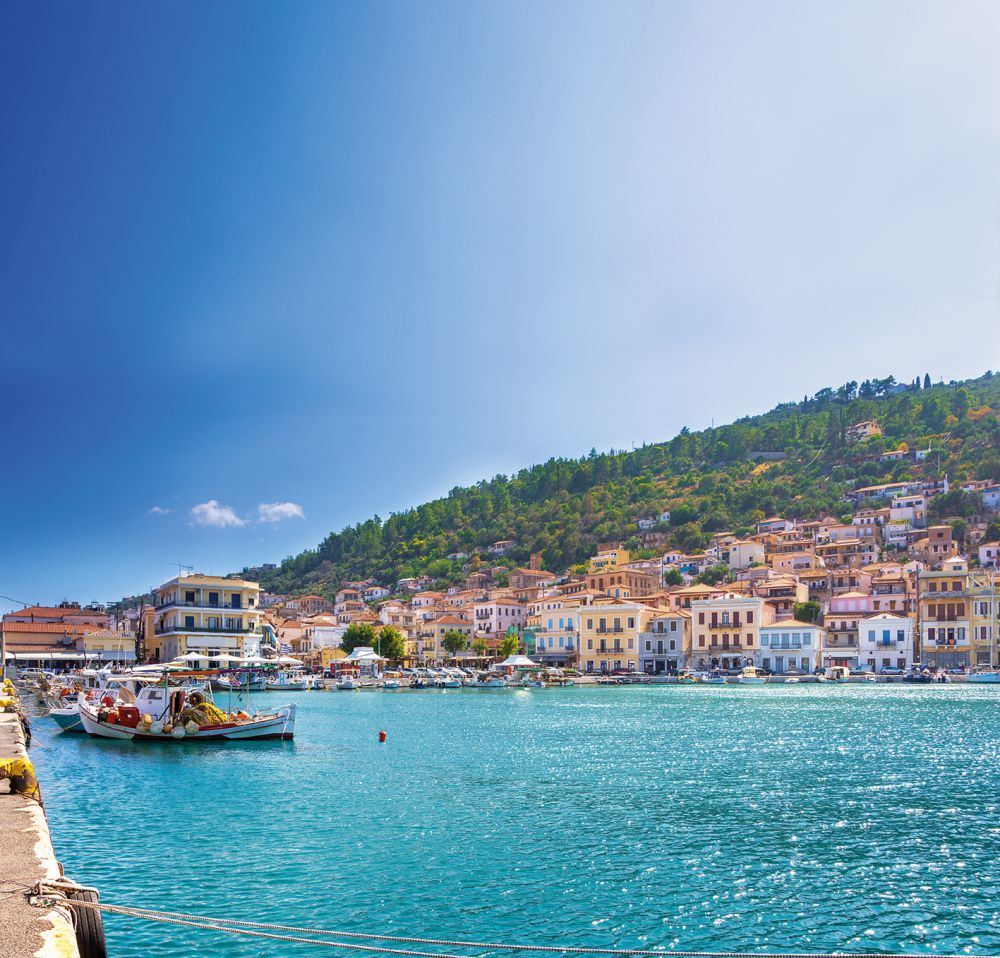
As we finally start booking our trips to the Mediterranean in search of sun, sandy shores and spectacular seafood, Rosemary Barron takes us to five destinations all ready to welcome us with open arms
Head to Turkey’s western coast, for clear blue waters washing up on sandy beaches, Ottoman heritage and historic towns with flagstone streets and cuisine that combines the best of Turkey and seafood fare
Potent flavours, aromatic foods and lively cafés along the cobbled lanes and busy harbour-fronts of the town of Çeşme and neighbouring Alaçati are the magnets that pull visitors to the Çeşme Peninsula, an hour’s drive from Izmir, on Turkey’s western coast. They also come for the soft-sand beaches and nearby islands as a shimmering blue sea is only ever a few kilometres away. The local architecture – Çeşme’s imposing 16th-century castle and surrounding Ottoman-era townhouses, and Alaçati’s distinctive stone houses – displays a complex and interesting past, just like peninsula’s gastronomic offerings.
Food is an outdoor thing here. You can snack on buzlu badem (iced almonds), erik (green, sour plums) and boyoz (quoits of sesame-coated bread) from street vendors; or savour mezzes of lightly smoked aubergine dip, radish tops, tiny börek (pastries filled with fresh goat cheese, herbs or shrimp), içli köfte (patties of meat, bulgur and walnuts fried in a brittle semolina shell) on a restaurant terrace. Head for Kumrucu Şevki for kumru, a toasted sesame-seed-bread sandwich filled with suçuk (spiced beef sausage), grilled cheese and tomato, served hot, with pickles.
Or, if it’s ice cream time, Rumeli’s pastanesi (patisserie) in Çeşme bazaar is the one. Ask for sakiz, ice cream flavoured with mastic, the resin of a bush that grows only on Chios, a Greek island that’s just a short, daily ferry-ride away. Mastic, once valued as a toothpaste for the women of the Constantinople sultans’ harem, also flavours drinks and gives Turkish delight its springy texture.
Passing along the tip of the peninsula, head for the quayside tables and fish fresh off the boats at Dalyan. In the small harbour, a fishermen’s cooperative lands and auctions its catch – grouper, red mullet, lobster, scorpion fish, silver gilt bream – every morning. Blue flag beaches stretch either side of Çeşme and, from the harbour, ferries and gulets (small sailing boats) leave frequently for the nearby islands – Eşek (nicknamed 'Donkey Island'), Blue Lagoon – as well as the Ilica hot springs and mud baths and rocky beaches to the south.
East of Çeşme, in Urla, some dishes reflect a Greek past – artichokes stuffed with rice, oğlak (kid goat in a pot) – and a liberal use of olive oil. There’s a special olive here, hurma, which is left on the branch until ripe so it can be eaten without curing. Try Turkish grape varietals such as white bornova misketi and red boğazkere in the Urla Winery (booking essential) and stroll around the town, with its reminders of the Ottoman way of life, from street barbers to bakers selling bread through the window. Beğendik Abi on a pretty square, is the place to discover the flavours of güveç (a stew named for the pot it’s baked in) or lor (soft curd cheese) with mulberry compote and aşure, a frumenty made with a mix of 16 grains and dried fruit.
In Alaçati, pretty bougainvillea cascades over the houses and boutiques and bars line colourful, flagstone streets. The marina is home to some very grand private yachts and offers many water sports. Near the centre, there’s a Saturday farmer’s market, and in the quiet side streets you’ll find small hotels – O EV, The Zeytin Konak and The Stay Warehouse converted from part of a brewery and surrounded by pines. Dining in Alaçati is alfresco and relaxed: hot paprika, cumin and herbs flavour dishes; pomegranate sauces dress balik (grilled fish) or salads of purslane and mallow; a sweet tooth is indulged with tahini puddings, lokma (fried sweet dough), kataïfi (shredded filo pastry) filled with cheese and pistachios, and rich kaïmaki (similar to clotted cream). And in one of the many alluring pavement cafés you’ll find the most memorable flavour of all: Turkish coffee, ‘thick, black as hell, strong as death and sweet as love’, as the Turkish proverb goes.
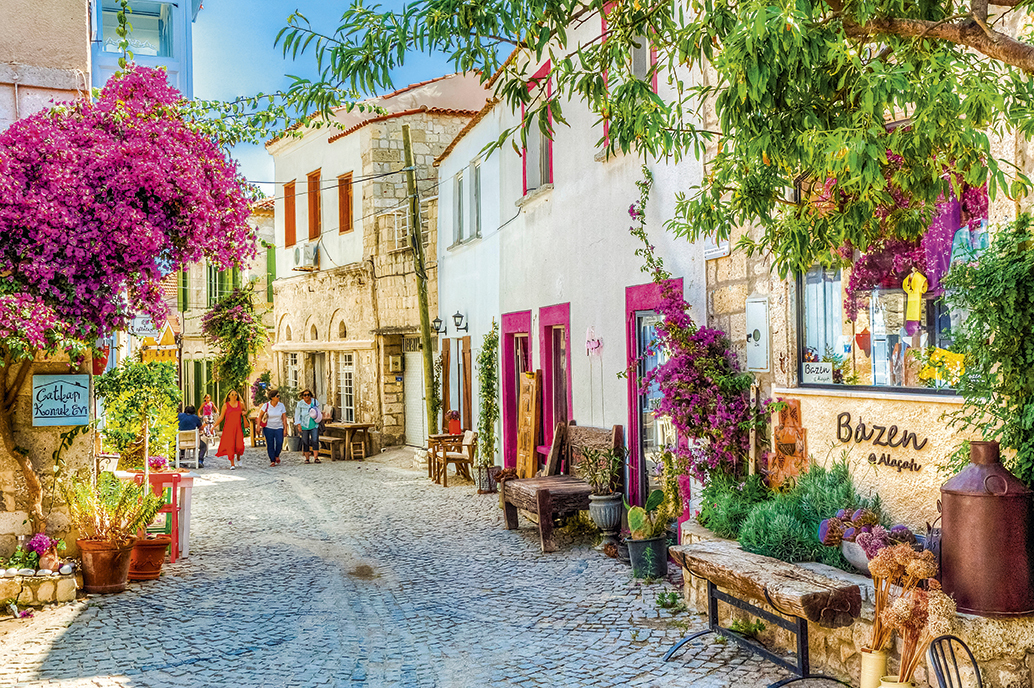
Early Mediterranean explorers were enraptured by the charms of Cyprus, and in the World Heritage city of Paphos, you have a bit of everything the island offers, from ancient ruins to timeless culinary traditions
Stunning ruins of an ancient city, dazzling Byzantine monasteries and frescoed tombs, and its status as the legendary birthplace of Aphrodite, are just a few of the reasons why Paphos, Cyprus’s smallest city should be on every traveller's list this summer. A World Heritage Site with a thriving café scene, and fresh fish and colourful salads served in the sunshine are even more reasons to head to this 2017 European Capital of Culture in the eastern- most part of the Mediterranean, yet only four hours from London.
A city walk takes you along palm tree-lined boulevards, past galleries and boutiques and, to the north, between the ancient ruins of Paphos and the Tombs of the Kings to The Elysium Hotel – and 50km of golden beaches – some wild, others peaceful or entertaining – bordering a sparkling sea. When summer heat threatens to overwhelm, a hinterland of forested hills, painted churches, small wineries and lively tavernas beckon.
Set 80km off the southern Turkish coast, Cyprus has attracted Mediterranean navigators since the earliest times; the island was famous for its cereals, herbs and wine. North-east of Paphos, abandoned stone mills in Letymbou village testify to a bread- making past; today, you’ll find some locals still following tradition, firing up clay ovens in courtyards to bake the slow-fermented dough that becomes crusty loaves. They may also bake pastitsio (layers of meat sauce, cheese and macaroni) or flaouna, a kind of cheese loaf-within-a-loaf. Dense and chewy, it’s a rare remnant of feast days past. So, too, is resi (cracked wheat pilaf), a wedding banquet speciality unique to Paphos.
These Troodos uplands are the gastronomic heart of Cyprus – terraced hills of vineyards, peach orchards and olive groves, with caper bushes cascading over stone walls and goat-friendly rocky slopes perfumed by wild oregano, thyme, fennel and mint. Much of the population has deserted the land in favour of town life, and vacant smallholdings are a forager’s paradise of walnut, quince, lemon and loquat trees, and the carob, its beans dangling from branches in large clusters. But in the villages, the old tradition of the Cypriot meze lives on. At Stou Kir Yianni restaurant in Omodos, try little dolmades, mint-seasoned grilled halloumi, loukanika (wine-soaked sausages) and afelia (pork with orange peel, cinnamon, cloves and bay leaves).
Wine has been a part of the gastronomic fabric of Cyprus since ancient times, famed for its robust, sweet Commandaria, a wine named by the medieval Knights Templars who made Cyprus their base during the Crusades. There’s space for lighter wines, too, though. In 1,000m-high Vouni Panayia Winery the huge pithoi (terracotta pots) that, until a generation ago, held Commandaria wine, have been replaced by modern tanks fermenting grape varietals that are both native (white xynisteri, spourtiko, red ntopio mavro, maratheftiko) and international (cabernet sauvignon and grenache). Lunch on the terrace (booking recommended) is a meze of cos lettuce and wild herb salad, scrambled egg and courgettes, woodland mushrooms; mains include charcoal-grilled meats; and desserts are palouzes (jellies made with grape juice) and sticky filo pastries.
More sweet, local delicacies are on display in Limassol’s covered agora (market). Pause to sample almonds dipped in grape syrup, walnuts, aubergines and quinces preserved in syrup, loukoumia (Turkish delight) and tiny pies filled with sultanas and pumpkin, before you set out to explore this cosmopolitan city which is built of layers upon layers of history.
Westwards, the red-gold setting sun lights up the sky in Paphos, and the bar-with-a-view at the modern and minimalist hotel Almyra. Take an evening stroll along the harbour-front to Carob Mill restaurant (no need to book), opposite the imposing 13th-century castle. With a cool night-time breeze drifting off the lovely bay and a glass of the Crusaders’ favourite tipple in your hand, the rich past of Paphos feels closer. Especially if you have a dish of orza on your table, its pretty rice-shape no different now from the pasta that was discovered on a 3,000-year-old island archaeological site.
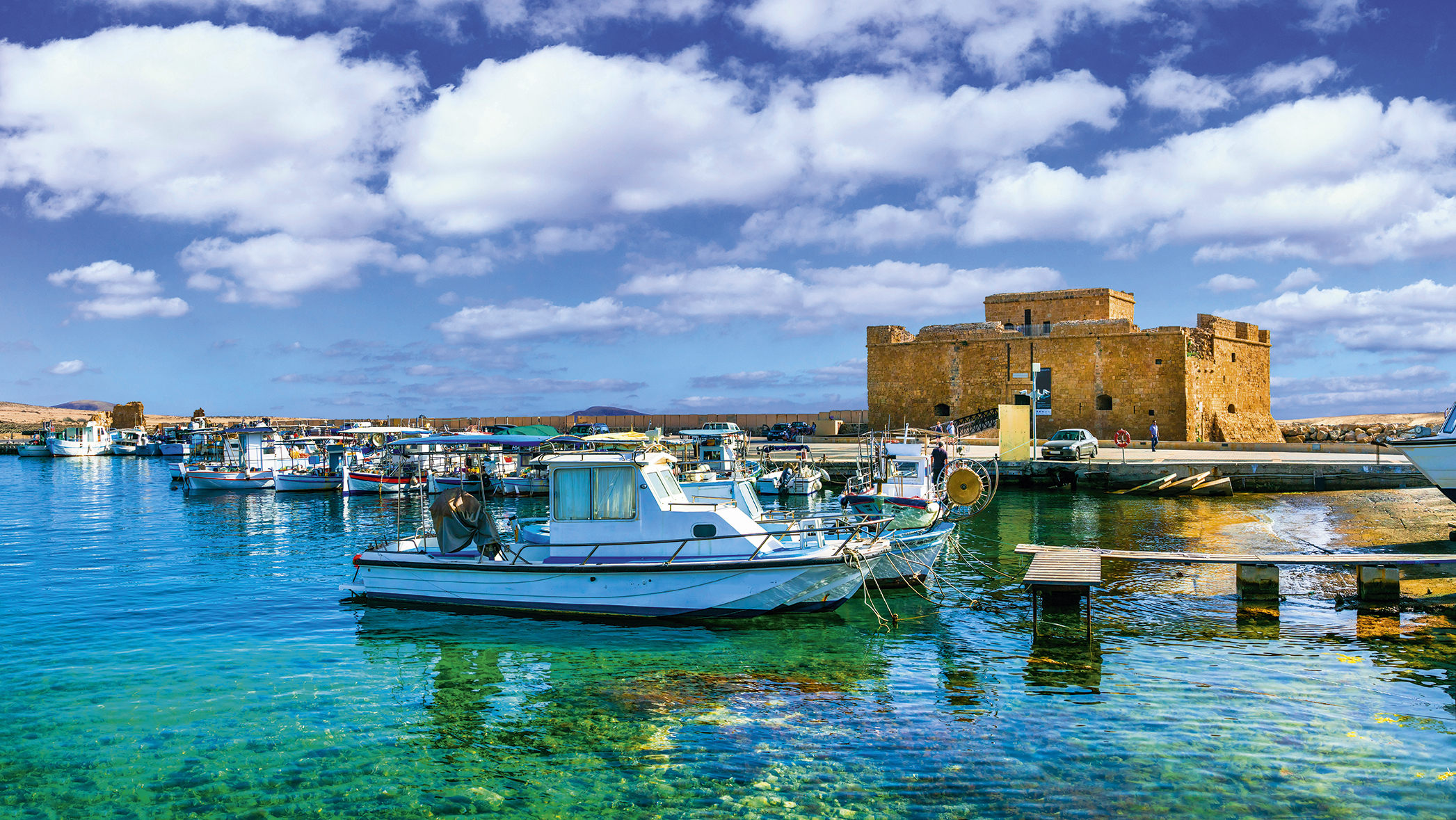
Israel’s third city is its most eclectic, with street food to reflect the cultures that merge under the watchful eye of Mount Carmel, while the sea laps at its toes
Houmous, shawarma, falafel, pitta, baklava. To enjoy these familiar foods at their tastiest, messiest best, they need the touch of an experienced cook and to be eaten in the Mediterranean air. So head for Haifa, a city that spreads dramatically across the northern slopes of Mount Carmel, down to Israel’s Mediterranean shore. Locals will tell you where the best are to be had: the creamiest houmous with salad in Abu Shaker, in the lower city near the port; juicy shawarma (originally lamb or mutton, now also chicken or beef, roasted for hours) from Shawarma Emil, in Derech Allenby; and falafel flavoured with coriander and cumin, doused with tahini sauce and tucked into a pitta with pickles – at HaZkenim (‘old people’) in Wadi Nisnas, an area now the centre of Haifa’s Arab life. This is where a street market spreads over several streets with a plentiful array of local produce. Try the bourekas (small pies) on offer, made as squares, triangles or circles with diverse contents of aubergine, cheese, spinach or meats, and with different pastry – filo, puff or brik (flour and water) denoting the baker’s origin.
Bring your walking shoes with you, for Haifa is a city of steep paths. Start your walk up Mount Carmel through the manicured terraces of the Bahá’í Gardens to the Shrine of the Báb, one of the holiest sites in the Bahá’í faith. Breathtaking views of the city, Akko (or Acre, 30km north) and the coastline unfurl as you climb; visit nearby 19th-century Stella Maris Monastery, built by the Carmelite order that was established by hermits in the 12th century. From here, cable cars take you swiftly down to the sandy beach and leafy promenade of Bat Galim. Nearby, the historic German Colony, named for the German Templars who settled here in the 19th century, is a vibrant district of laid-back cafés, boutiques and nightlife. The modern Golden Crown hotel has lovely views, and breakfasts to set you up for a day’s walking; the hotel Carmella period charm, sea views and artworks. In the Galilean Fattoush restaurant, enjoy the local way of eating – shared plates of the eponymous salad, houmous topped with mushrooms and garlic, okra in rich tomato sauce, baked spicy-minced veal. Then perhaps take a stroll in Hadar, a neighbourhood that’s home to bric-a-brac stores, second-hand bookshops and Weimar Bauhaus buildings.
Ancient Haifa’s wealth was partly due to its ability to turn marine snails into that glorious, deep-purple dye so beloved by Biblical kings and Roman emperors; its tumultuous history has stretched from occupation by the Canaanites to the founding of modern Israel in 1948, with Phoenicians, Romans, Byzantines, Arabs, Crusaders, Ottomans and the British in between. Akko shares a similar history, with remains of the old Crusader city both above and below sea level, and an Ottoman walled town with citadels, mosques and baths, on top. The best way to see Akko is from the water; take the ferry from Haifa or book a boat ride. Shop in the souk and at sunset, sample Israeli wines – of grape varietals including cabernet sauvignon, syrah and carignon at Efendi Hotel preferably on the terrace.
In the cool Wadi Salib and port area, try Venya Bistro for fish kebab, cauliflower tabbouleh and cheesecake; or Hananal 24 for squid and artichoke salad. Nearby, in Suidan a 100-year-old deli, you can indulge in luscious, scrunchy baklava, while you stock up on fragrant dried herbs and spices to recreate the scene at home.
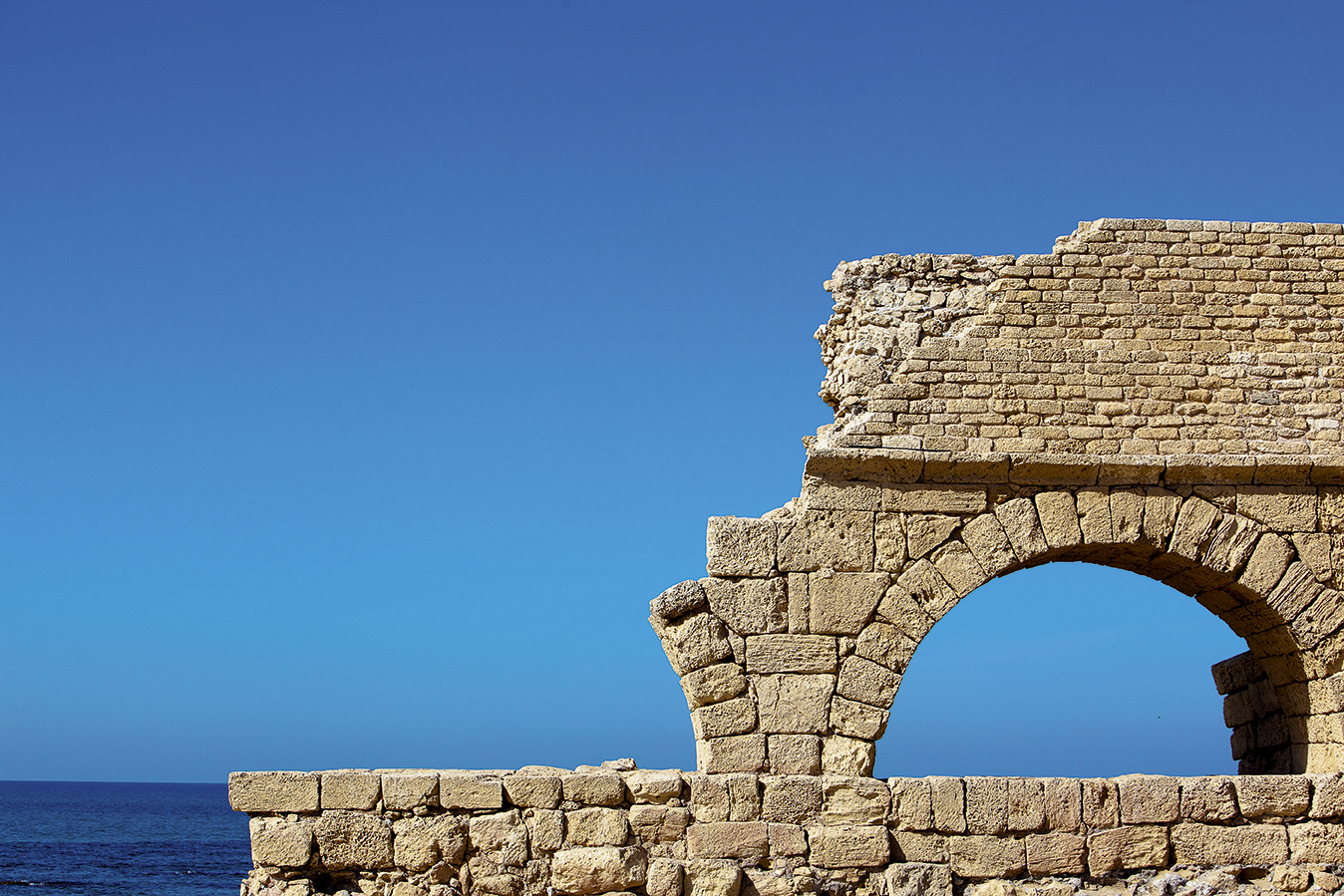
Stretching southwards from the Peloponnese, the Mani Peninsula is a fertile land bordered by small
Mention ‘Mediterranean’ to food lovers and they will probably say ‘olive oil’. Specify Greece, then refine it a little further to the Peloponnese and you may hear ‘creamy cheeses, aromatic herbs, crusty bread, wild greens, grilled fish and seafoods, stews of lamb, game and kid, perfumed citrus, luscious figs and quince, honeyed pastries, memorable wines’. At least if they’ve been here, because all these are staples to Peloponnese cooks, used in dishes that are rich with their very fine olive oil, from lathera (vegetable bakes) and siglino (preserved meats) to lathotyri (cheeses).
Around Kardamyli, an hour’s drive south from Kalamata, olive groves reach down to curving, sandy bays. In Lela’s beachside taverna (booking recommended) you may find briam (aubergines, courgettes and tomatoes baked in plentiful olive oil), hirino lemonato (pork in lemon), katsiki (baby goat) oryemista (rice- and herb-stuffed vegetables) from a daily-changing menu. Lela has credentials – for several years she cooked for Patrick Leigh-Fermor, the explorer and author of Mani, Travels in the Southern Peloponnese, who owned a house (now a museum) nearby. Or head to Kiki’s Taverna and try a lamb stew made with the family’s own olive oil, sitting at a table overlooked by the magnificent Taygetus mountains. Sixteen kilometres south, in the foothills above Stoupa you can discover for yourself how organically grown koroneiki and kalamata olives are made into olive oil at the producer, Mani; and at the attached Sonnenlink Bio Hotel you can wake up among olive trees.
While this part of the Mani – the middle ‘finger’ of three at the southernmost point of the Peloponnese peninsula – is fertile, further south, ‘inner’ Mani is wild and rocky. Here lie tiny Byzantine monasteries and around 90 villages with houses of 18 metre-tall stone tower houses. At Cape Tainaron, its isolated tip, The Temple of Poseidon protects the legendary site of the Gate to Hades.
If visiting the entrance to the underworld sounds off-putting, be reassured the views are marvellous, the atmosphere palpably exciting. The narrow roads, however, are not for the faint-hearted.
A few kilometres north and high on a hill, a 16th-century village, Vathia, is made up of a dramatic cluster of tower houses – built so families could defend themselves from each other and pirates, rather than an invader – once home to seriously-feuding clans.
A few small coves and the azure-green waters of Marmari Bay are nearby, and so, too, is the 19th-century tower house-turned-hotel Tainaron Blue in whose theatrical setting you can try award-winning PDO Peloponnese wines of indigenous grapes – red agiorgitiko, pink-skinned, perfumed moschofilero, whites kydonitsa and mantinia. The area is also famous for its sweet wines, malvasia and mavrodafni.
Towards Gerolimenas (once a pirate base), pause in the little village of Alika. A stroll takes you past many intriguing Byzantine churches, some with frescoes, and through cobbled squares to the small, tucked-away taverna Alika. It’s in these friendly, family-run tavernas, found throughout the Mani, that you’ll get to try regional dishes such as gigantes (dried beans baked in olive oil-rich tomato sauce), rabbit with horta (wild greens), snails with trachanas (wheat sun-dried in yogurt), hilopites (handmade pasta), all made with the local olive oil, honey, herbs and cheeses beloved by chefs the world over.
In quiet, picturesque Gerolimenas, dinner on the terrace of hotel Kyrimai a converted tower house on the small, pebbled bay, consists of tyropittes (little cheese pies), psaria fish fresh from the bay, glaktoboureko (syrup-soaked, semolina-custard pie) and glyka (fruits in syrup). Heading further north, a ride in a ferried punt takes you to the crystal-clear waters and stalactites and stalagmites of the Diros caves. The water is clear – but cold – in Stoupa, too, as springs in the Taygetus mountains flow into the sea here. Eighty years ago, this was briefly home to author Nikos Kazantzakis and his friend Alexis Zorba, while he was writing his epic book, Zorba the Greek, and the words: ‘What a strange machine man is! You fill him with bread, wine, fish and radishes, and out come sighs, laughter, and dreams.’
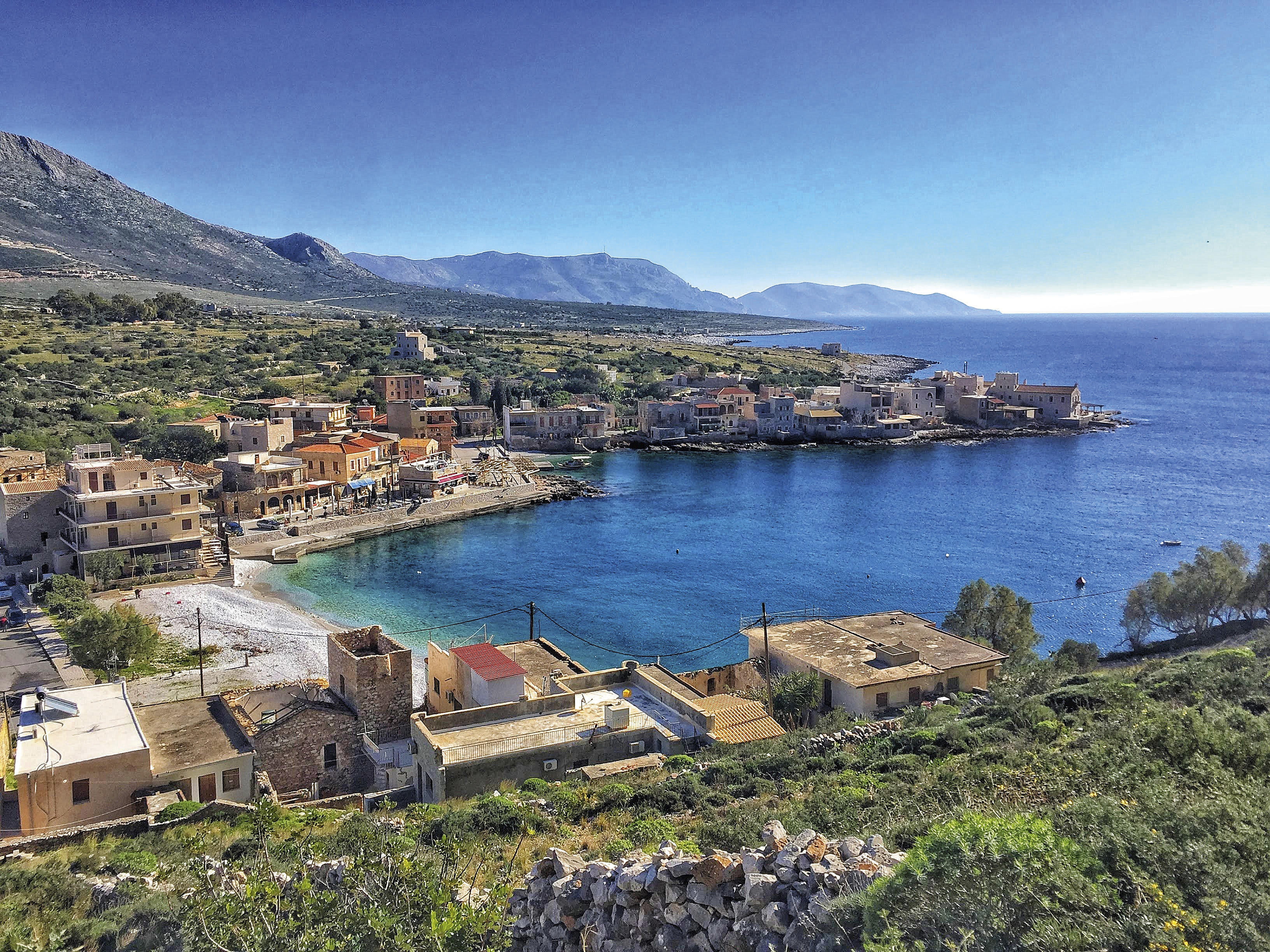
The dramatic coastline of this Italian island is met by a landscape that seems to have been forgotten by time in the best way possible, with traditional villages, abundant wild herbs and a people fuelled by its legendary home-style cooking
Granite hills dotted with mysterious, ‘beehive’ stones, rocky cliffs, isolated caves and lovely coves are the backdrop to the beautiful, luminescent waters of the Gulf of Orosei, midway along Sardinia’s eastern coast. Small, peaceful Cala Gonone, a three-hour scenic drive from the airport lies on its shore. Artists, potters and leather-workers live in nearby unspoilt villages, surrounded by rocky upland scrub of myrtle, wild herbs, dwarf oaks and lentisk, criss-crossed with the well-worn paths of magnificently horned mouflone (wild sheep).
This little-changed landscape has sustained life – in fact, long healthy life – for centuries. The restaurants are mostly attached to small hotels: in Cala Gonone’s Hotel L’Oasi and Hotel Miramare you’ll find home-style cooking, with dishes such as cheese croquettes, crudo ham, fried squid and pasta, and ingredients sourced from the local cooperatives of shepherds and fishermen; in Bue Marino dishes of octopus, prawns, swordfish and sea bream. In the harbour, small ferries for dolphin- and whale-watching and trips to the isolated southern beaches dock alongside brightly painted fishing boats; watch the action from the terrace of the Hotel Dorada (to stay: choose a quieter back room).
Just above Cala Gonone, in the village of Serra Orrios, lie two marvellous nuraghes – bronze-age, beehive-shaped basalt stones from extinct volcanoes. No one knows why, or by whom, the thousands of these nuraghes, some 2.5 metres tall, were built as there are no written records, but they do explain an ancient, colloquial name for this part of Sardinia, ‘the land of giants’. Further inland, often along roads in name only, time seems to stand still. Horsemanship, weaving and woodcraft are still-active local skills, eagles swoop far above and shepherds keep a watchful eye on their goats and sheep.
You’ll come across farmhouses here where you can eat, so take the chance to try some of the many local small-production cheeses if you can: mild sheep-milk dolmen, serra orrios, galanu and pranos; the Pecorino-like distintu, tinnias; Ricotta-esque chimeras; and goat’s milk caprabella, montes and frue. Sheltered by his cuile, a traditional hut, a shepherd can live off the land for weeks, with wild herbs, small game, mushrooms, honey from the fruits of the wild strawberry tree and pane carasau, or shepherd’s bread – a thin, crisp flatbread. Smallholdings grow wheat and barley (for dense, chewy local breads), olives and fruit and vegetables like courgettes, salad leaves, tomatoes, figs and grapes – to sell in Cala Gonone.
The formidable coastline – one that put off even the Romans from invading, although not the Byzantines, Goths or Barbary pirates – hides a rich flora. Mirto, a digestif liqueur unique to Sardinia and nearby Corsica, is made from the berries of the wild myrtle, which are macerated for at least four months in neat alcohol, then crushed, and their juice is then added to sugar syrup and the macerating liquor. Myrtle also flavours a local feast-day dish of roast suckling pig. Spit-roasted for three hours, slathered with olive oil and herbs, it’s served with aplomb on an avaione, a bark platter favoured by shepherds as it can be rinsed off and left to dry hanging from a tree, ready for the next meal.
A half-hour drive north of Cala Gonone takes you to the spectacular, labyrinthine stalactite-and stalagmite-filled grottos of Ispinigoli, discovered by shepherds just 70 years ago. Nearby, from the terrace of the Hotel Ispinigoli platters of charcuterie and cheeses are well matched by wines of the locally favoured cannonau (grenache) grape – red, dry and sometimes fortified – and the dramatic, background scenery.
There’s no shortage of remarkable sights in and around Cala Gonone, including those on the table. Pottery is decorated with ancient motifs of harvest or fertility and local life is still ‘on the plate’. Dishes are simple and uncomplicated, unlike the centuries- old (and no longer eaten) festive mallori de su sabatleri, a calf stuffed with a goat that’s stuffed with a suckling pig, but a local toast is the same: ‘to the way of life, the food of life’.
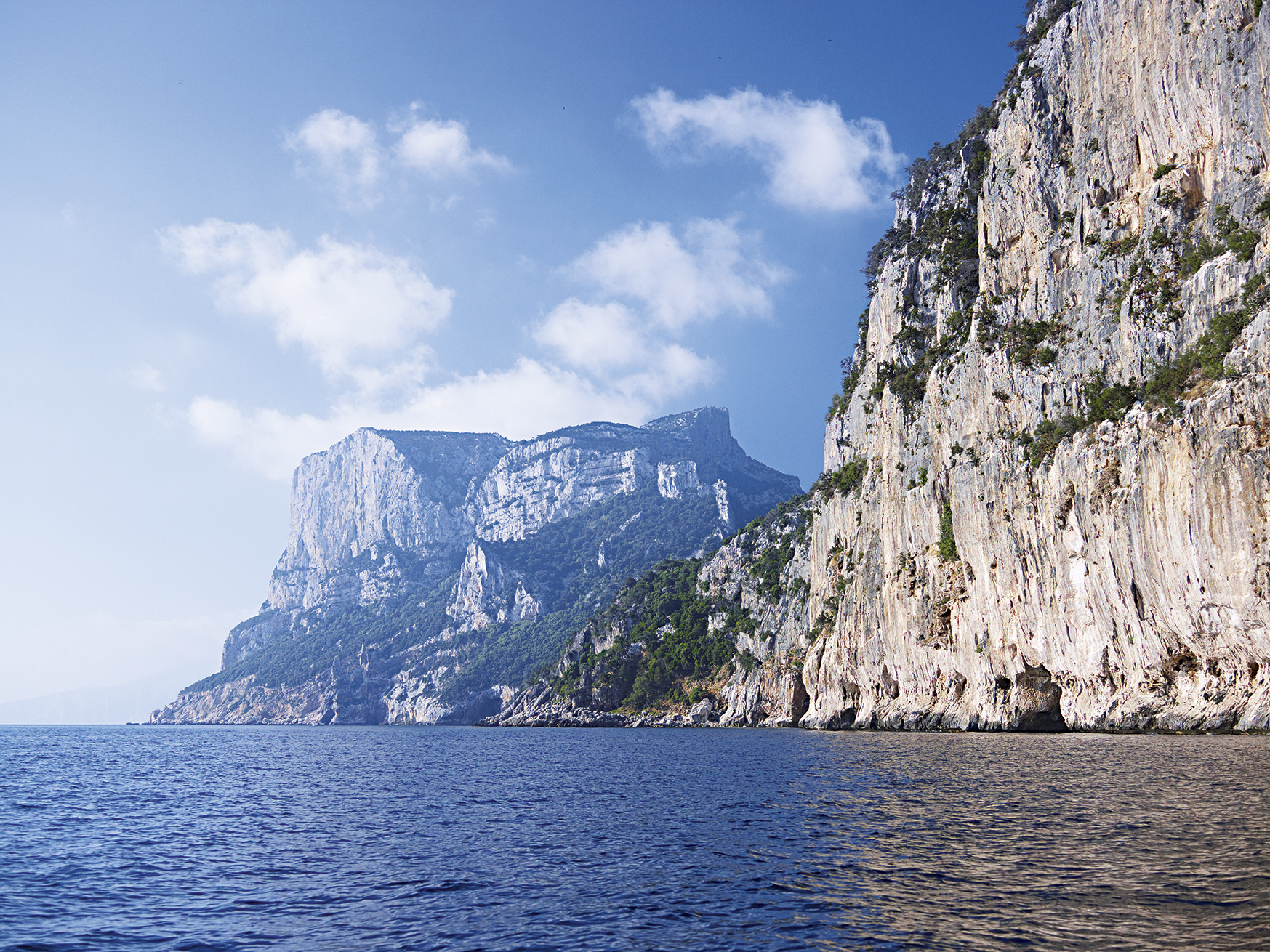
Subscribe and view full print editions online... Subscribe